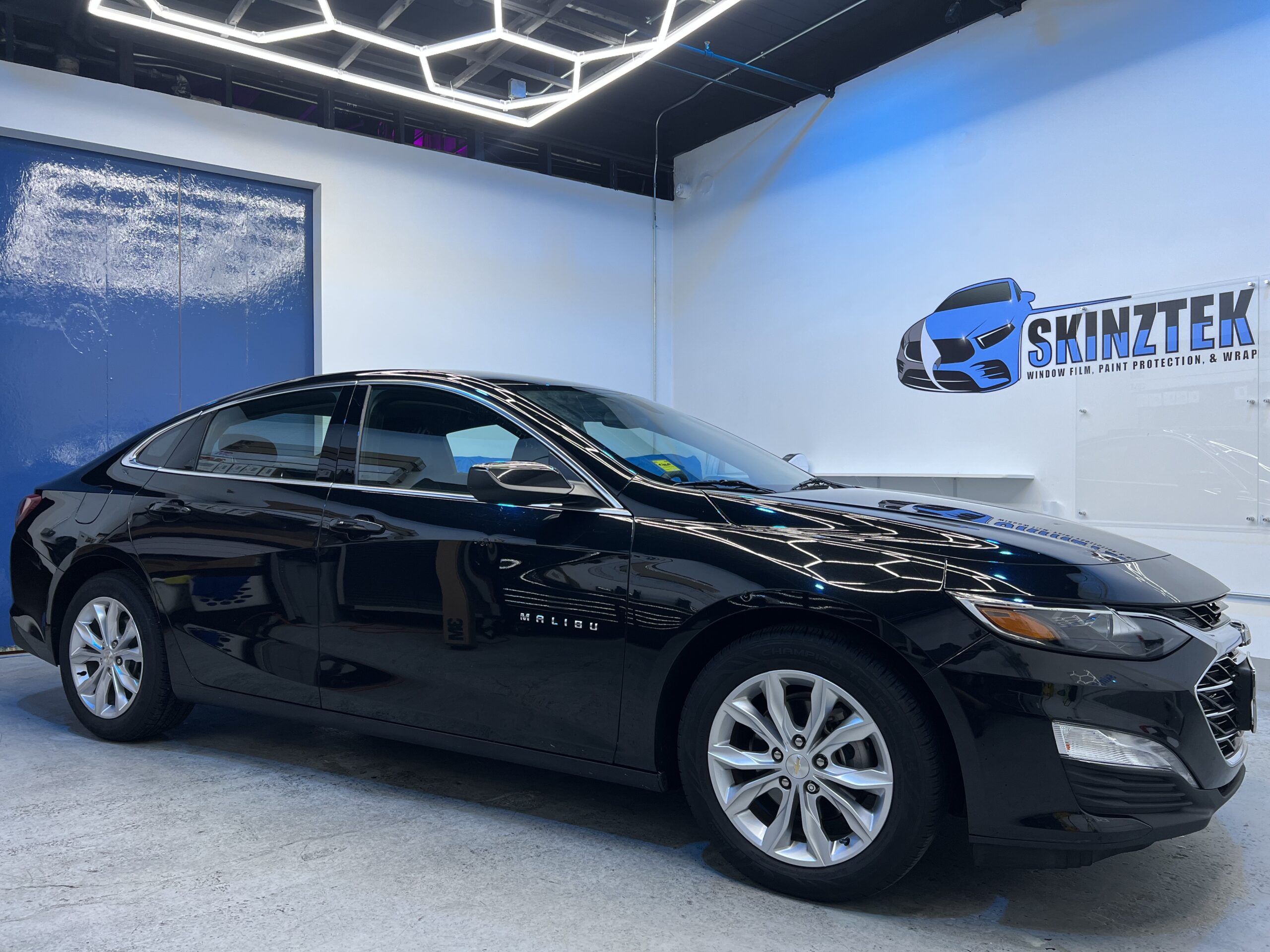When summer heat hits Chicago, your car’s interior can feel like an oven within minutes. But while traditional window tints can darken your windows to reduce heat, modern ceramic window tint uses advanced infrared (IR) rejection technology to achieve the same result—without reducing visibility.
So, how does ceramic tint block heat without making your windows too dark? It’s all about science. Let’s break down how IR rejection works and why ceramic window tint is the best solution for keeping your car cool, comfortable, and protected year-round.

What Is Infrared Radiation and Why Does It Matter?
Infrared radiation is a type of electromagnetic energy that comes from the sun. While you can’t see it, you can definitely feel it. Infrared rays are responsible for that stifling heat you experience when you step into a car that’s been sitting in the sun.
Sunlight contains three main components:
- Visible Light: What we see—makes up about 42% of sunlight.
- Infrared Radiation (IR): The heat component—around 53% of sunlight.
- Ultraviolet Light (UV): The invisible rays that cause skin damage and fade car interiors—about 5% of sunlight.
Traditional window tints primarily reduce visible light to keep interiors cooler. Ceramic window tint, on the other hand, targets infrared heat directly, keeping your car cool without darkening the glass.
How Ceramic Window Tint Blocks Infrared Heat
Ceramic tint uses nano-ceramic particles embedded in the film. These particles are microscopic, invisible to the naked eye, and non-metallic—meaning they don’t interfere with radio signals, GPS, or phone reception.
Here’s how it works:
- Infrared Heat Rejection: The ceramic particles are engineered to absorb and block infrared heat, preventing it from penetrating your car’s interior.
- Selective Filtering: The film selectively blocks IR radiation while allowing visible light to pass through. This keeps the car cool without significantly darkening the windows.
- UV Protection: In addition to IR rejection, ceramic tint blocks up to 99% of harmful UV rays, protecting passengers and preventing interior damage.
It’s a perfect balance: less heat, less glare, and no loss of visibility.
Why IR Rejection Matters for Your Driving Experience
Infrared heat isn’t just a minor inconvenience—it affects everything from driving comfort to fuel efficiency.
- Keeps Interiors Cooler: Ceramic tint can reduce cabin temperatures by up to 45% during peak summer months.
- Less AC Usage: A cooler cabin means less strain on your air conditioning system, which can improve fuel efficiency.
- Improves Driving Focus: Reducing heat and glare helps minimize driver fatigue, especially on long commutes or bright days.
When you don’t have to fight heat and glare, you stay more focused, comfortable, and safe behind the wheel.
Is Ceramic Tint Only for Hot Summers?
Nope—ceramic tint offers year-round benefits.
- Winter Comfort: It helps insulate your car, reducing heat loss in colder months.
- UV Protection All Year: UV rays don’t take a break in winter, and ceramic tint provides continuous protection for passengers and interiors.
- Improved Privacy: While ceramic tint doesn’t have to go dark to block heat, you can choose darker options if privacy is a priority.
In a city like Chicago, where weather conditions vary dramatically from season to season, ceramic tint delivers value 12 months a year.
The Myths About Ceramic Tint and IR Rejection
Myth 1: Ceramic Tint Makes Your Windows Too Dark
- Ceramic tint can be nearly clear while still blocking infrared heat, allowing you to maintain full visibility.
Myth 2: Only Dark Tints Can Reduce Heat
- IR-blocking ceramic tint targets heat directly, making traditional dark tints unnecessary for temperature control.
Myth 3: All Window Tints Block IR Heat
- Many tints block visible light but don’t stop infrared heat. Ceramic tint is specifically engineered to reject IR rays while letting visible light pass through.
Choosing the Right Ceramic Tint for Your Car
Ceramic tint comes in various shades and performance levels. If heat reduction is your primary concern, look for films with a high Total Solar Energy Rejection (TSER) percentage. This measures how much heat, including IR radiation, is blocked from entering the cabin.
At SkinzTek, we offer premium ceramic window films designed for Chicago’s extreme weather conditions. Our team helps you choose the right tint for your needs—whether you want crystal-clear IR rejection, added privacy, or a combination of both.
Experience the Power of Ceramic Tint with SkinzTek
Tired of sweltering car interiors and endless glare? Ceramic window tint provides a simple, effective solution. It keeps your car cooler, protects your interior, and enhances your driving experience without the need for dark windows.
Contact SkinzTek today to schedule your ceramic tint installation and enjoy a more comfortable, efficient ride—rain, shine, or snow.
